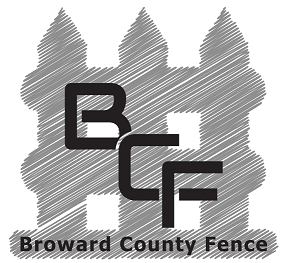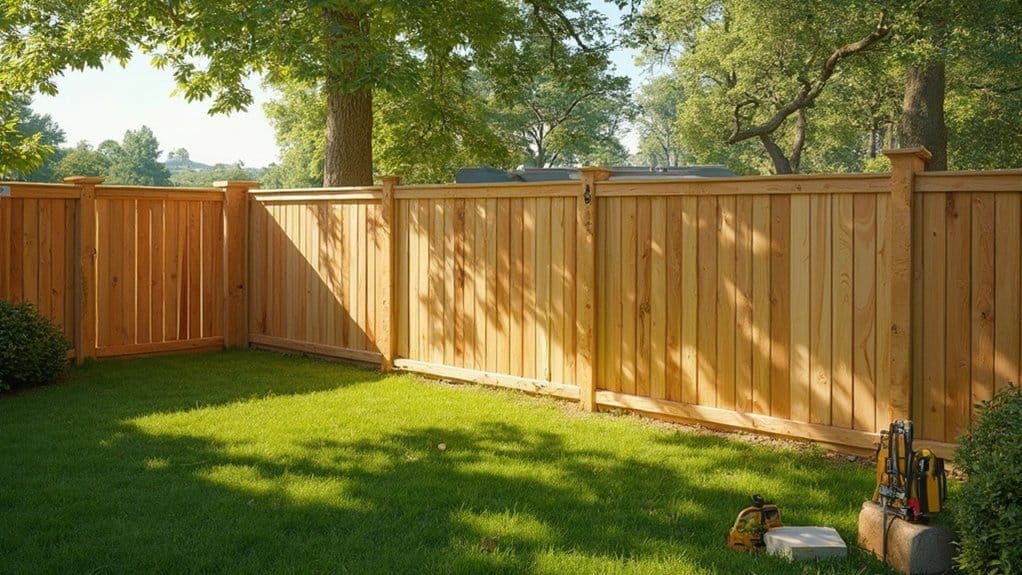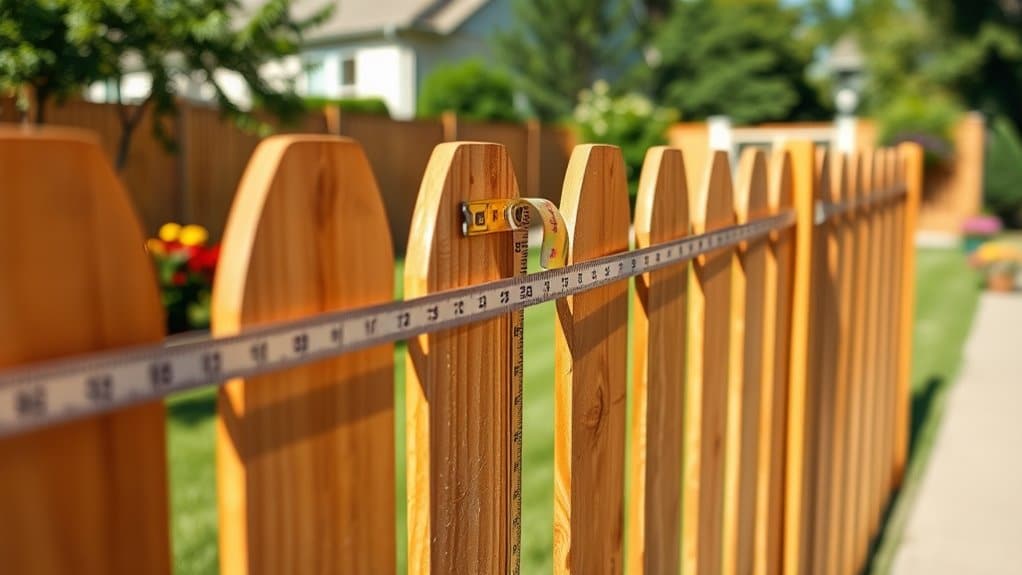To effectively navigate fencing regulations as a homeowner, start by identifying your property lines. Make sure to check local zoning laws for height limits and acceptable materials. Open communication with your neighbors can help avoid disputes and clarify who is responsible for maintenance. If you live in a homeowners’ association, review their guidelines, as they may influence your fence design. Consulting with professionals can also help you steer clear of common mistakes. Keeping these points in mind will ensure your fencing project goes smoothly and harmoniously.
Key Takeaways
- Check your property lines by reviewing your deed and hiring a surveyor to prevent disputes.
- Look into local zoning rules for height limits, material choices, and setbacks before building your fence.
- Get the necessary permits by reaching out to your local zoning office and providing required documents like site plans and proof of ownership.
- Talk to your neighbors about your fence plans to agree on maintenance and design, which helps maintain good relations.
- Review your Homeowners’ Association guidelines for approved materials and height limits before starting your fencing project.
Understanding Property Lines and Boundaries
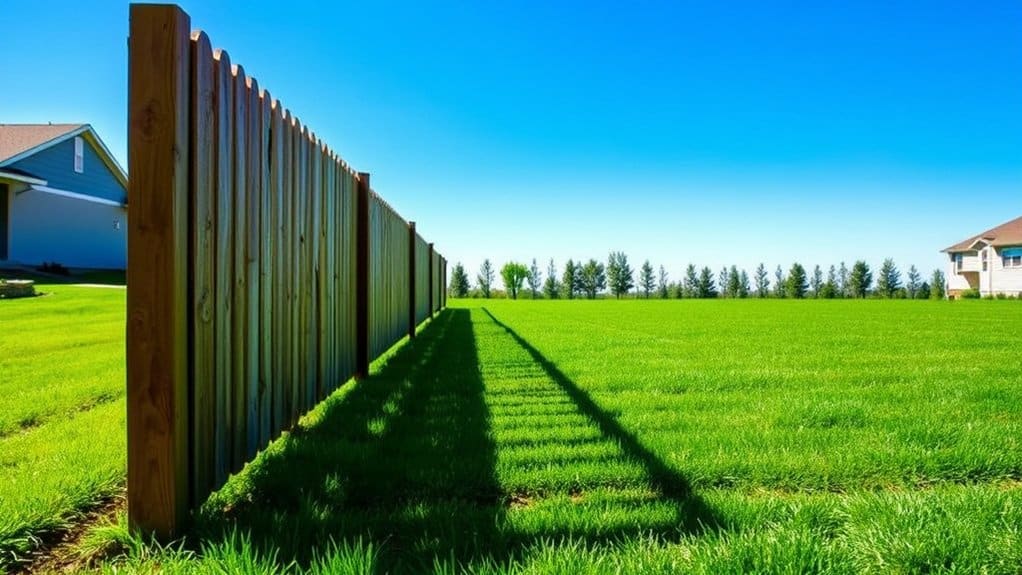
Understanding property lines and boundaries is crucial for homeowners, especially when building a fence or starting a construction project. Knowing where your property ends and your neighbor’s begins can prevent disputes. Check your property deed for boundary descriptions that may mention landmarks or markers. Look for physical markers like survey pins to confirm these lines. If you’re unsure, hiring a professional surveyor can provide accurate measurements. Accurate property records are vital for owners and buyers, ensuring you comply with local laws and maintain good relationships with neighbors, avoiding misunderstandings that could lead to expensive legal problems. Additionally, verifying property boundaries can significantly help in determining the correct placement of your fence and preventing potential conflicts with neighbors.
Navigating Zoning Regulations
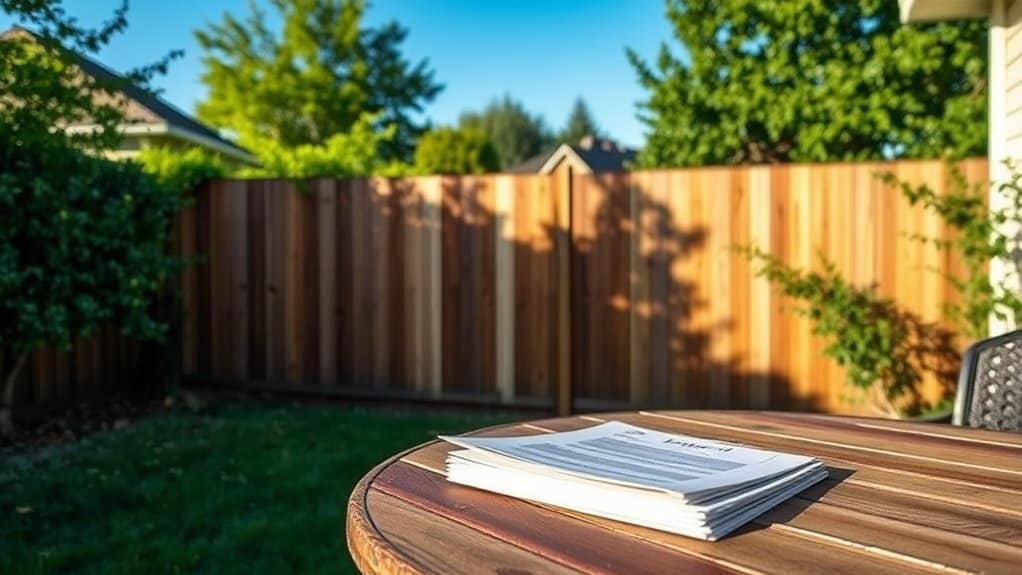
Before installing a fence, it’s important to understand zoning regulations that can affect your project. Here are four key factors to consider:
- Height Restrictions: Know the maximum allowable heights for fences in your front and back yards.
- Material Specifications: Find out which materials are allowed to match your neighborhood’s look.
- Setbacks: Ensure your fence is set back the right distance from property lines and sidewalks. Consulting a qualified land surveyor can help you maintain proper setbacks and avoid potential disputes.
- Permit Requirements: Check if you need a permit; failing to get one can result in fines or having to take the fence down.
If you have a special situation, you might look into zoning variances for some flexibility.
Following these rules can boost your property’s value and curb appeal while helping you avoid legal issues or conflicts with neighbors.
Importance of Neighborhood Communication
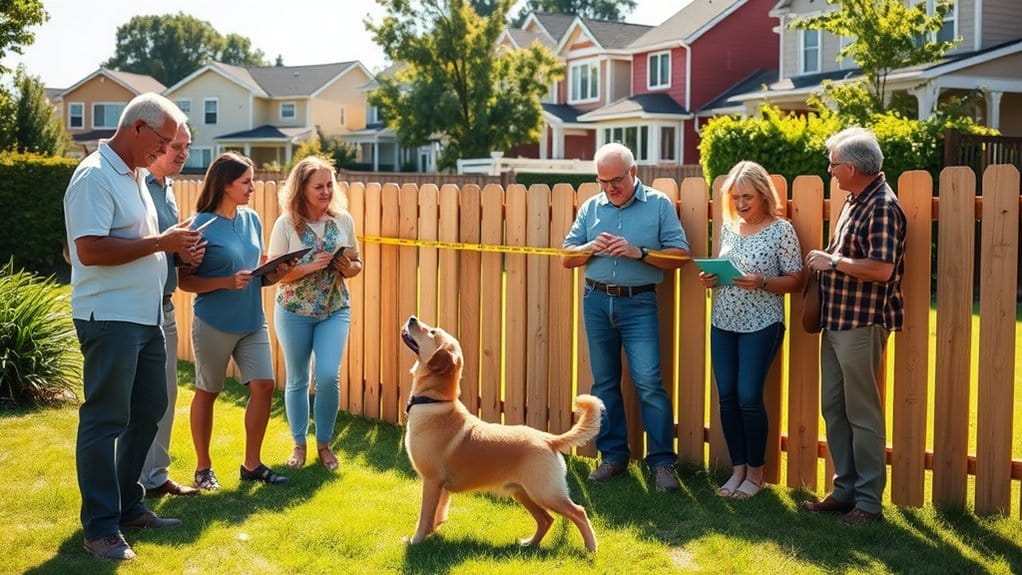
Effective communication in a neighborhood is key to building community and avoiding conflicts, especially around shared concerns like fencing. Attending local events and talking to neighbors face-to-face helps build trust and encourages teamwork. Using social media for updates keeps everyone in the loop, and having ways for residents to share their thoughts helps address issues quickly. Assigning a dedicated admin to manage a social media page ensures that important updates regarding fencing regulations are communicated efficiently and effectively. Good communication reduces misunderstandings about property lines, which can prevent disputes. Establishing clear agreements when it comes to maintenance responsibilities helps create a more harmonious neighborhood where everyone feels valued. Strong communication leads to better decisions and a more connected community, which is vital for navigating fencing regulations.
Choosing the Right Materials
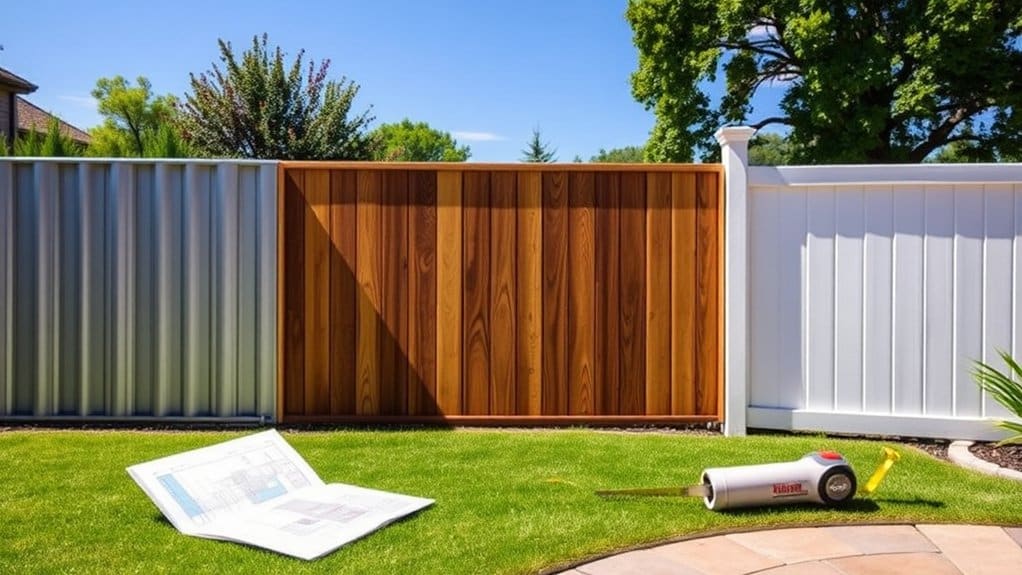
Choosing the right materials for your fence affects both its look and durability. Here are some options to consider:
- Wood Fences: Classic appearance but need upkeep; cedar is a good choice for resisting decay.
- Vinyl Fences: Durable and low-maintenance, these come in styles that resemble wood.
- Metal Fences: Aluminum and steel are strong and weather-resistant, great for decorative purposes.
- Composite Fences: Made from wood fibers and plastic, these eco-friendly options offer a wood-like look with less maintenance.
Think about your budget and how much maintenance you’re willing to do. Additionally, consider your fence’s primary function to ensure it meets your specific needs.
Your choice will impact your property’s appearance and your fence’s longevity.
Consultations With Professional Advisors
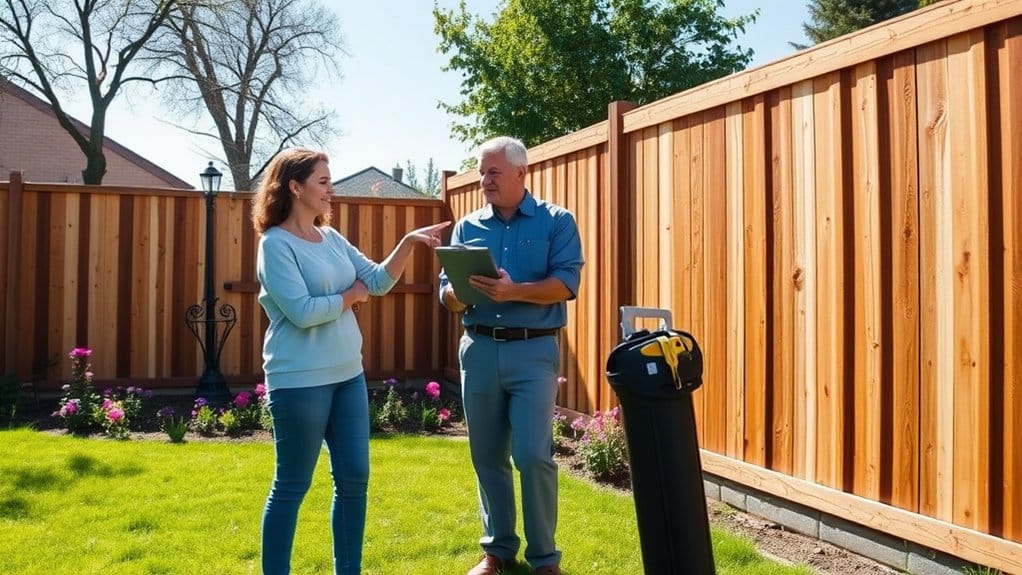
Consulting with professional advisors is crucial for your fence project. They can help you understand local regulations, zoning laws, and permit requirements, preventing potential fines.
For instance, if you’re unsure about height restrictions in your area, an advisor can provide clarity. By using their expertise, you can design a fence that meets legal standards and suits your style. Additionally, they can guide you through the permitting process to ensure all necessary approvals are obtained.
Importance of Expert Guidance
When dealing with fencing regulations, getting expert advice can really simplify your choices.
Here are four key areas where professionals can help:
- Local Fencing Laws: Experts can explain the rules about fence height, materials, and placement, keeping you out of legal trouble.
- Material Selection: Professionals can suggest materials that fit with your neighborhood’s style and durability needs, saving you from expensive errors.
- Permit Process: Guidance from experts can make applying for permits easier and faster, helping you avoid delays.
- Neighbor Relations: Experts can assist in discussions with neighbors about property lines and design, reducing the chance of conflicts.
Additionally, they can advise on the importance of property surveys to ensure accurate boundary delineation before construction.
In short, expert guidance can save you time, money, and headaches when putting up a fence.
Navigating Local Regulations
Homeowners can navigate local fencing regulations by following a few key steps.
First, check with your local government office to learn about zoning laws regarding fence height, materials, and placement, as these can vary widely. Most projects will require a permit, which typically costs between $50 and $500.
Also, be aware of community aesthetic standards; some neighborhoods have rules to ensure fences improve the area’s appearance.
If you live in a homeowners association (HOA), review their specific guidelines on fence styles and materials.
Height Restrictions for Fences
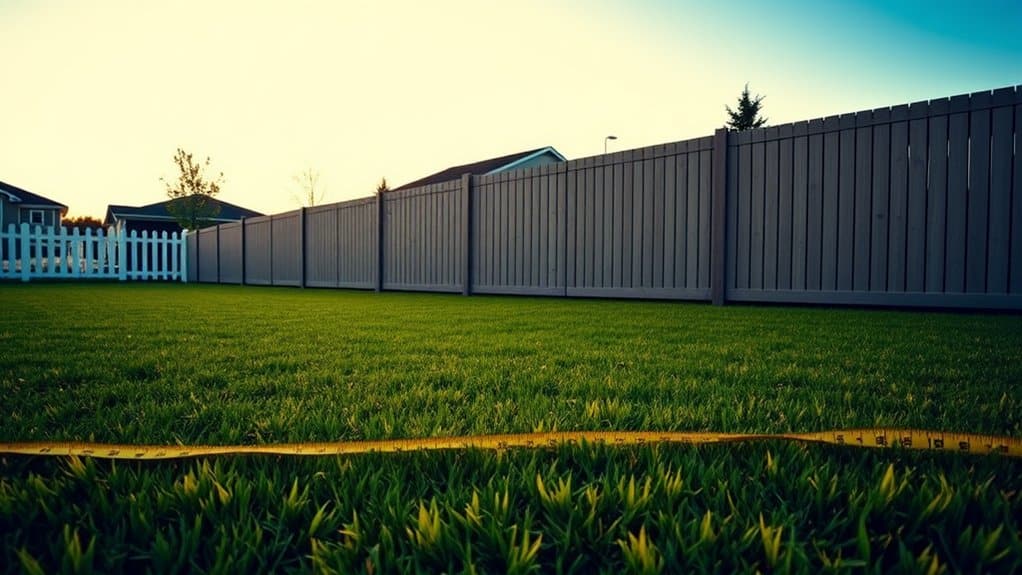
Height restrictions for fences can differ based on your location and local regulations. Here are some essential points to consider:
- Front yard fences usually can’t exceed 3 to 4 feet for visibility.
- Backyard fences can typically be 6 to 8 feet tall, depending on local laws.
- Commercial properties may face different height restrictions set by municipal codes.
- Permits are generally needed for fences that exceed local height limits.
Always check your local building codes to ensure compliance and avoid fines.
Following these restrictions not only improves your property’s appearance but also helps maintain neighborhood harmony.
Special Considerations for Historic Areas

Living in a historic area means you need to be mindful of how your fencing fits with the neighborhood’s character.
Choose materials like wrought iron, cast iron, or wood that match the historic style of your home—think Victorian or Colonial designs. Avoid materials like chain-link or stockade fences, as they’re usually not allowed.
It’s also important to discuss your plans with neighbors since changes can affect property values. Check with your local historic district commission to understand their rules and ensure your fence meets community standards, helping you avoid any legal issues.
Permits: When and How to Apply

Before starting your fencing project, check if you need a permit according to local regulations.
The application usually requires detailed plans and documents, like site surveys and material specs. Knowing these requirements helps you avoid delays and ensures you meet community standards.
Determining Permit Necessity
To ensure your fencing project meets local regulations, follow these steps:
- Check Fence Types: Most residential fences typically require a permit for safety reasons.
- Know Height Limits: Local regulations usually set height limits between 3 to 8 feet depending on where the fence is located in your yard.
- Confirm Property Lines: Make sure you know your exact property boundaries to avoid conflicts with neighbors.
- Review Zoning Rules: Look into local codes for specific material and zoning requirements.
By understanding these factors, you can avoid unexpected permit fees and ensure your fence is compliant.
A little research now can prevent issues later on.
Application Process Overview
Applying for a fencing permit can feel overwhelming, but breaking it down into clear steps makes it manageable.
Start by reaching out to your local zoning department to understand the rules for your fence. Then, complete the application form from your building department, noting important details like the type, height, and materials of your fence.
Keep track of the application timeline, as most permits are approved within one to three business days. If you don’t receive a response, don’t hesitate to follow up to ensure your application is complete and avoid any delays.
Lastly, remember to factor in permit fees, which typically range from $50 to $500 based on your project’s complexity.
Required Documentation Details
After you submit your fencing permit application, it’s important to gather the necessary documents for a smooth approval.
Here’s what you’ll need:
- Site Plan: A clear map showing your property lines and where you plan to put the fence.
- Proof of Ownership: A document like a Warranty Deed to show you own the property.
- Blueprints/Engineering Plans: Required for fences taller than 6 feet, outlining how the fence will be built.
- Material Specifications: Details about the materials you plan to use, such as wood or metal.
Make sure to have these ready to facilitate the process!
Safety Standards for Fencing
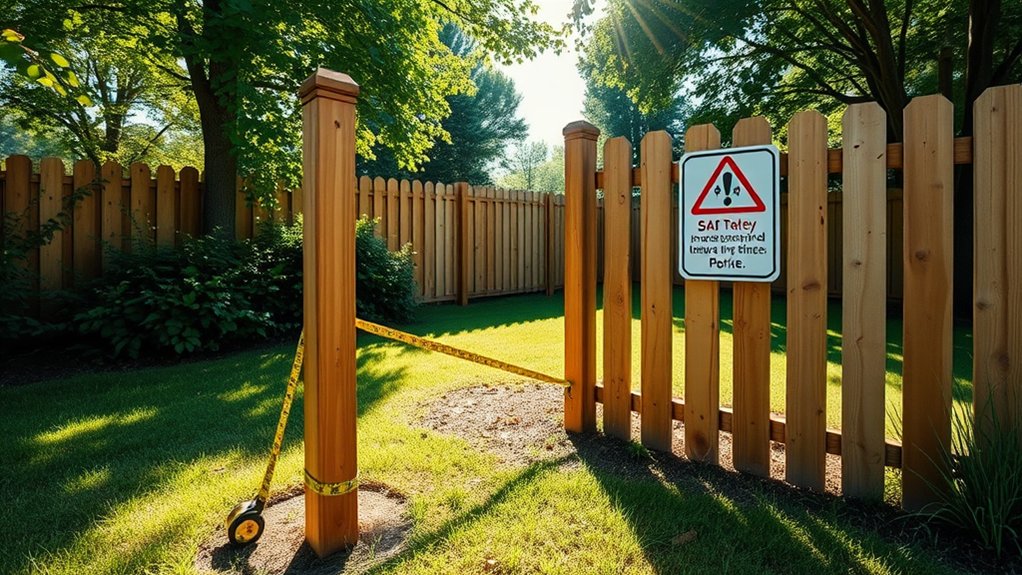
When installing a fence, it’s essential to follow safety standards to protect your property. Start with strong materials and a solid foundation to ensure stability against weather.
Keep gaps narrow to prevent small children or pets from getting stuck, and avoid sharp edges to reduce injury risks. Regular maintenance and safety inspections are crucial to catch any wear and tear that could compromise safety.
Also, check local height and visibility regulations to avoid blocking sightlines. Choose materials suited for your local climate to enhance durability and create a secure environment for your home and family.
Preventing and Resolving Fencing Disputes

To prevent and resolve fencing disputes, communicate openly with your neighbors about your plans.
Confirm your property boundaries through surveys to ensure your fence meets local regulations and doesn’t intrude on their land.
For example, if you plan to build a fence, discuss it with your neighbor beforehand.
This approach helps maintain good relationships and avoids conflicts.
Communicate With Neighbors
How can good communication with your neighbors help avoid fencing disputes? Here are four key points to consider:
- Open Dialogue: Talk openly about what you both expect from the fence installation and upkeep.
- Shared Responsibilities: Agree on who’ll handle maintenance and repair costs upfront.
- Design Considerations: Discuss fence height and materials to ensure it looks good for both sides.
- Local Regulations: Share information on local fencing laws to prevent any legal issues.
Confirm Property Boundaries
Clear communication with your neighbors is crucial for a smooth fencing project, but confirming property boundaries is equally important to prevent disputes. Start by checking property deeds and plat maps, which outline your legal boundaries. You can also use GPS technology and hire licensed surveyors for accurate measurements. Don’t forget to look into historical maps or archives, as they may offer valuable boundary information.
| Steps in Boundary Confirmation | Key Tools/Techniques |
|---|---|
| Review property deeds | GPS devices |
| Hire professional surveyors | Total stations |
| Analyze historical records | Archival research |
Understand Local Regulations
Understanding local fencing regulations is crucial to avoid disputes and ensure compliance. Here are the key points to keep in mind:
- Height Limits: Typically, front yard fences can be 3-4 feet tall, while backyards may allow heights of 6-8 feet.
- Placement Rules: Check zoning laws for where fences can be located in relation to property lines and streets.
- Material Restrictions: Some areas have rules about fence materials to maintain a certain look in the neighborhood.
- HOA Guidelines: If you live in a community with a homeowners’ association, be aware that they may have stricter rules regarding fence design and appearance.
Staying informed about these regulations will help you make smart choices when installing a fence.
Legal Implications of Non-Compliance
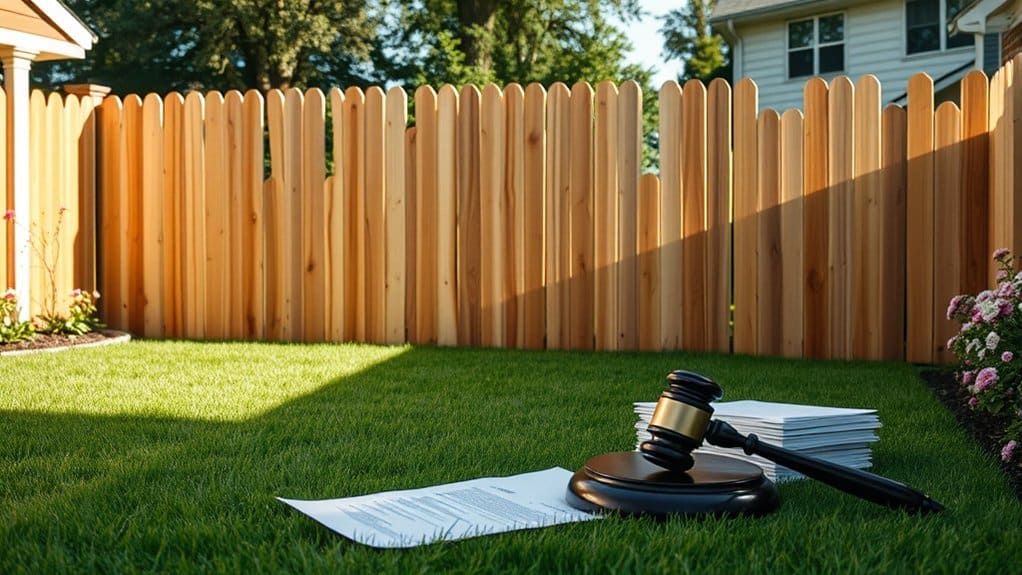
Not following fencing regulations can lead to serious legal issues for homeowners.
You could face fines ranging from hundreds to thousands of dollars, depending on where you live. If your fence intrudes on a neighbor’s property or creates a nuisance, it might spark disputes.
Additionally, if your fence causes accidents or injuries, you could be sued, increasing your liability. Local authorities may also demand that you remove or alter your fence, and you’ll have to cover those costs.
Plus, ignoring the rules might raise your insurance premiums or even result in liens on your property, affecting your finances and property value.
To avoid these problems, it’s crucial to comply with fencing regulations.
Homeowners’ Association Guidelines for Fencing
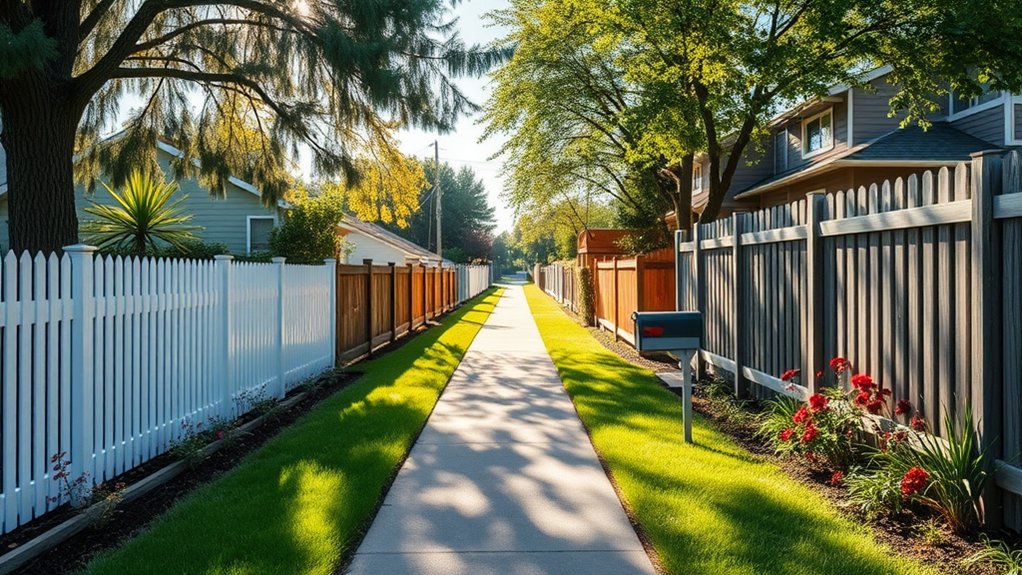
Understanding your Homeowners’ Association (HOA) fencing guidelines is essential to ensure your project goes smoothly.
Here are the main points to keep in mind:
- Get Approval First: Always submit your fence plans for approval before you start building.
- Know the Limits: Check the maximum height and approved materials for your fence.
- Follow Style Preferences: Make sure your fence design fits with what the neighborhood prefers.
- Keep It Maintained: Regular upkeep of your fence is necessary to avoid fines.
Frequently Asked Questions
How Can I Determine My Exact Property Boundaries?
To find your exact property boundaries, start with a property survey and look for boundary markers. Check your property deeds and local records for information on property lines and any easements. For example, if you’re unsure where your yard ends, a surveyor can help pinpoint that exact line.
What Common Materials Are Prohibited for Residential Fencing?
What materials are not allowed for residential fencing? In many neighborhoods, items such as chicken wire, barbed wire, and chain-link fences are often restricted due to aesthetic and safety issues.
Are There Any Exemptions for Ornamental Fence Height Regulations?
Yes, ornamental fences can have height exemptions, usually requiring at least 75% open surface area. This means they can’t completely enclose a yard, but they add visual appeal while following local rules. Always verify your area’s specific regulations.
How Often Should I Inspect My Fence for Safety Compliance?
Consider your fence a safety barrier; regular inspections are crucial. Aim for two checks a year, and increase frequency during severe weather to ensure it remains safe and functional.
What Should I Do if My Neighbor Disputes the Fence Location?
If your neighbor disputes the fence location, start with mediation to try and resolve the issue amicably. If that doesn’t work, consult a lawyer to understand your rights and options. Always keep communication clear and document any agreements you reach. For example, if your neighbor claims the fence is on their property, showing a property survey can help clarify boundaries.
Conclusion
In conclusion, understanding fencing regulations is crucial for homeowners. You don’t want to invest time and money into a fence only to discover it’s not compliant with local laws. By discussing plans with your neighbors, selecting appropriate materials, and following safety guidelines, you can build a fence that not only secures your property but also fits well within your community. Stay informed, and you can turn your fencing ideas into reality!
